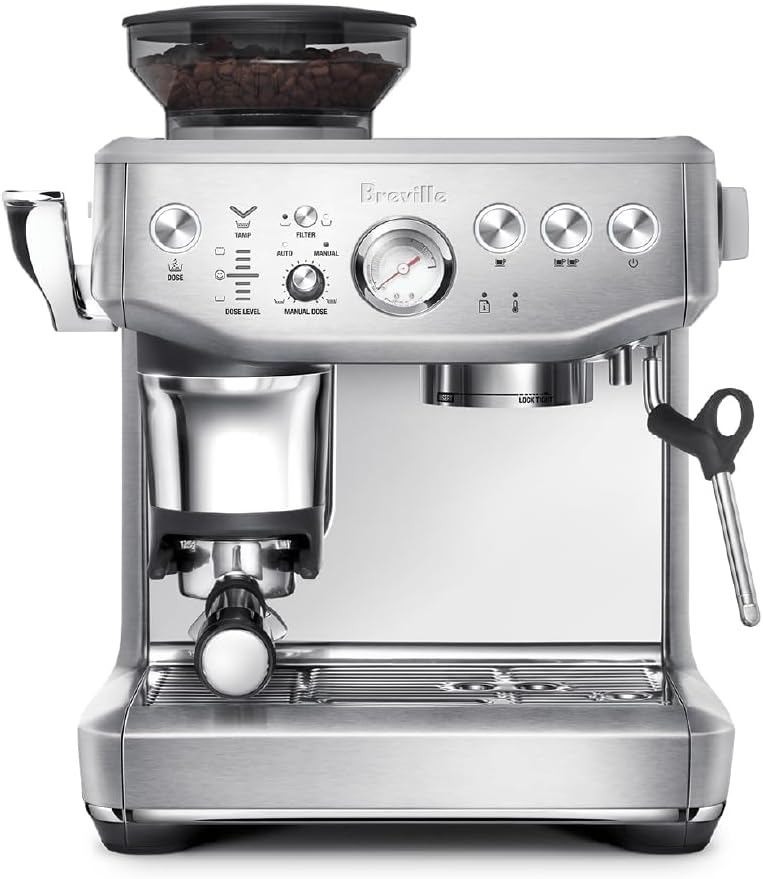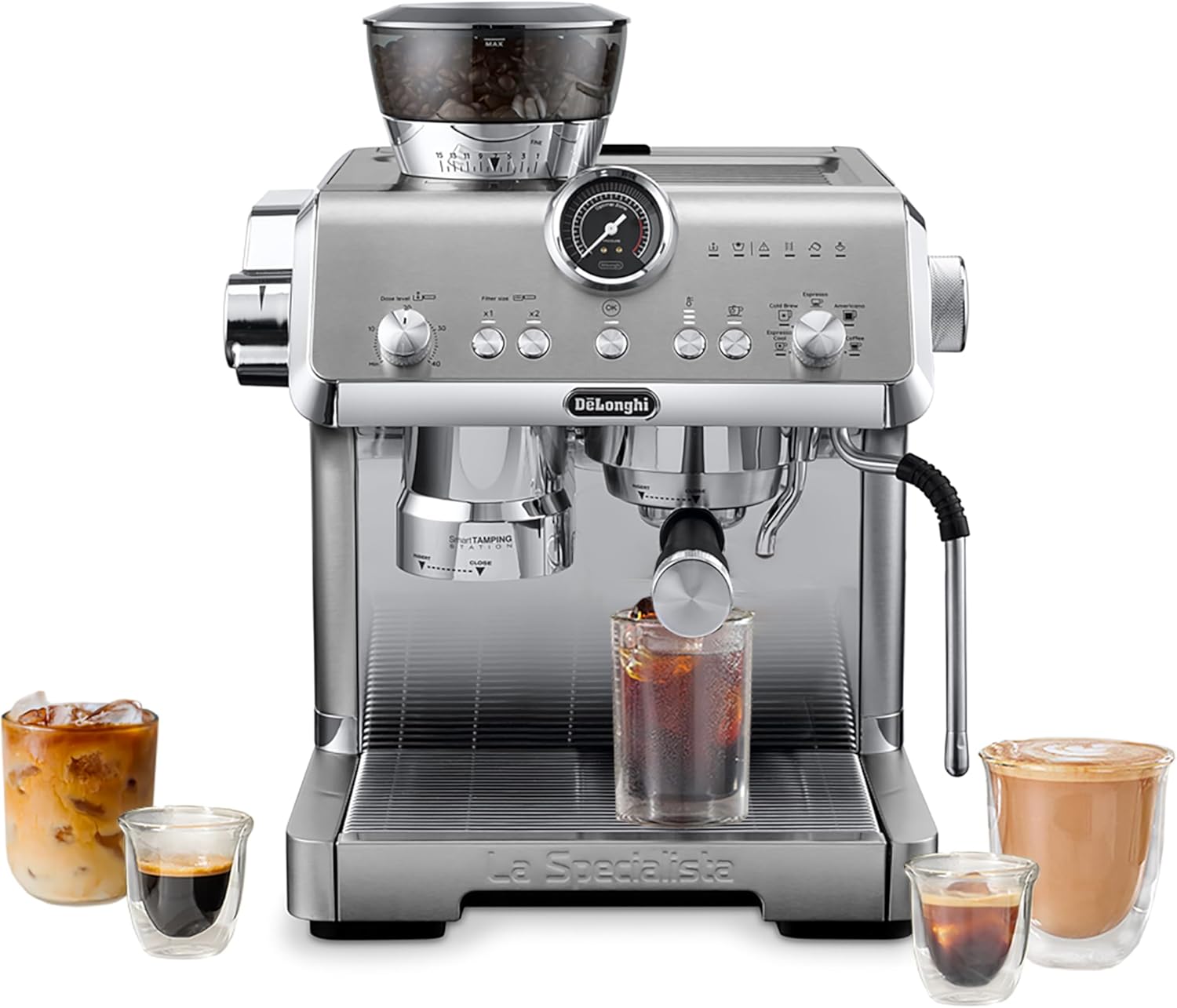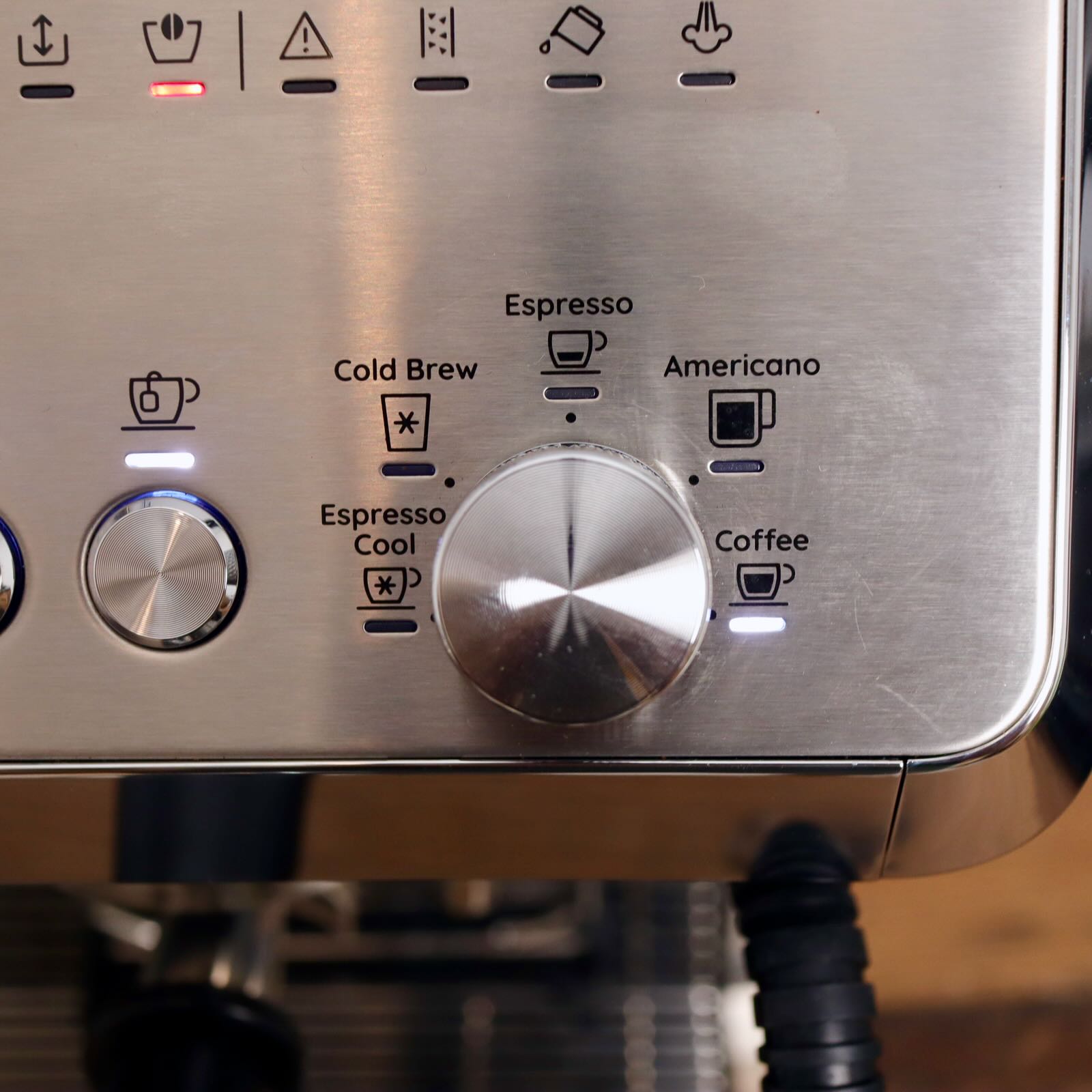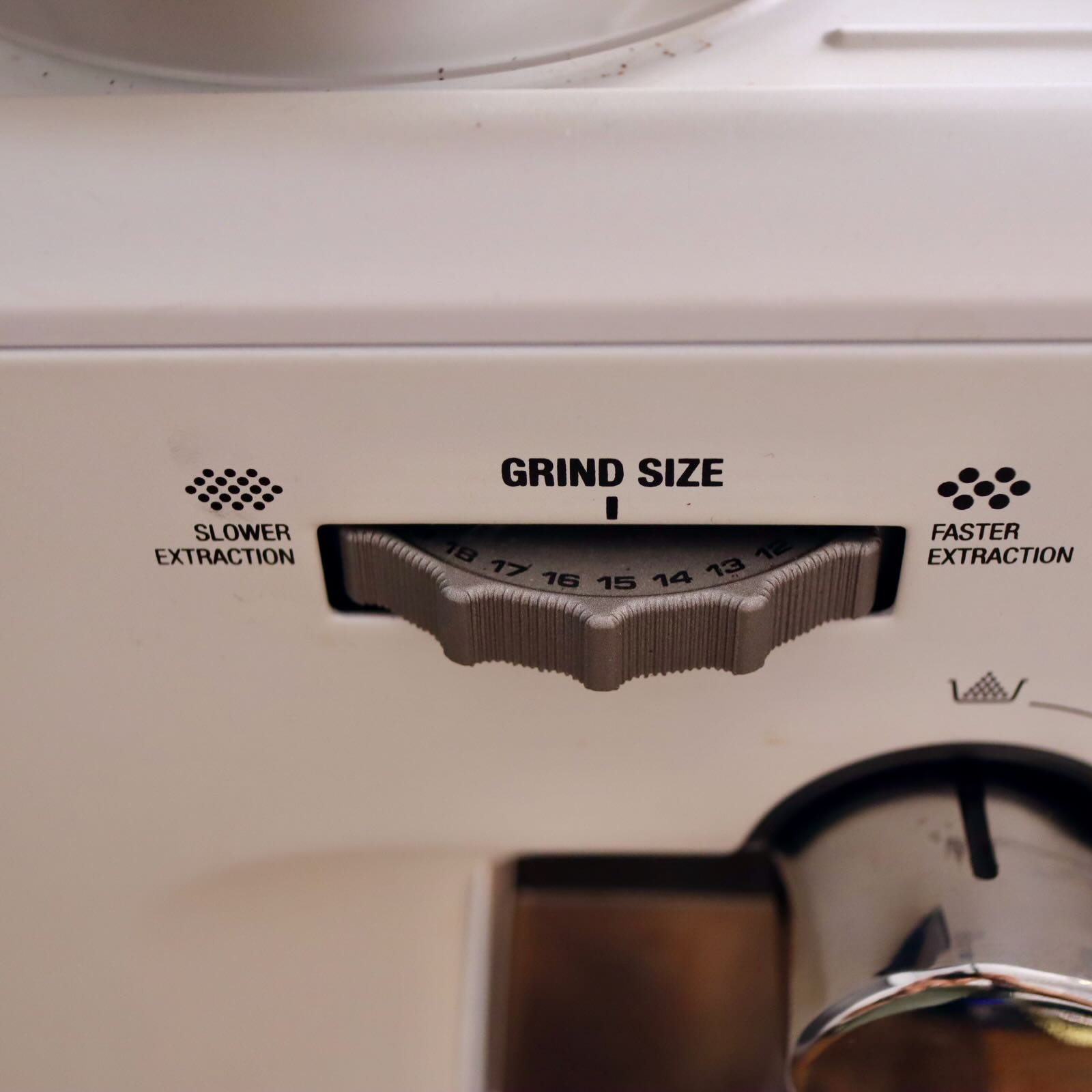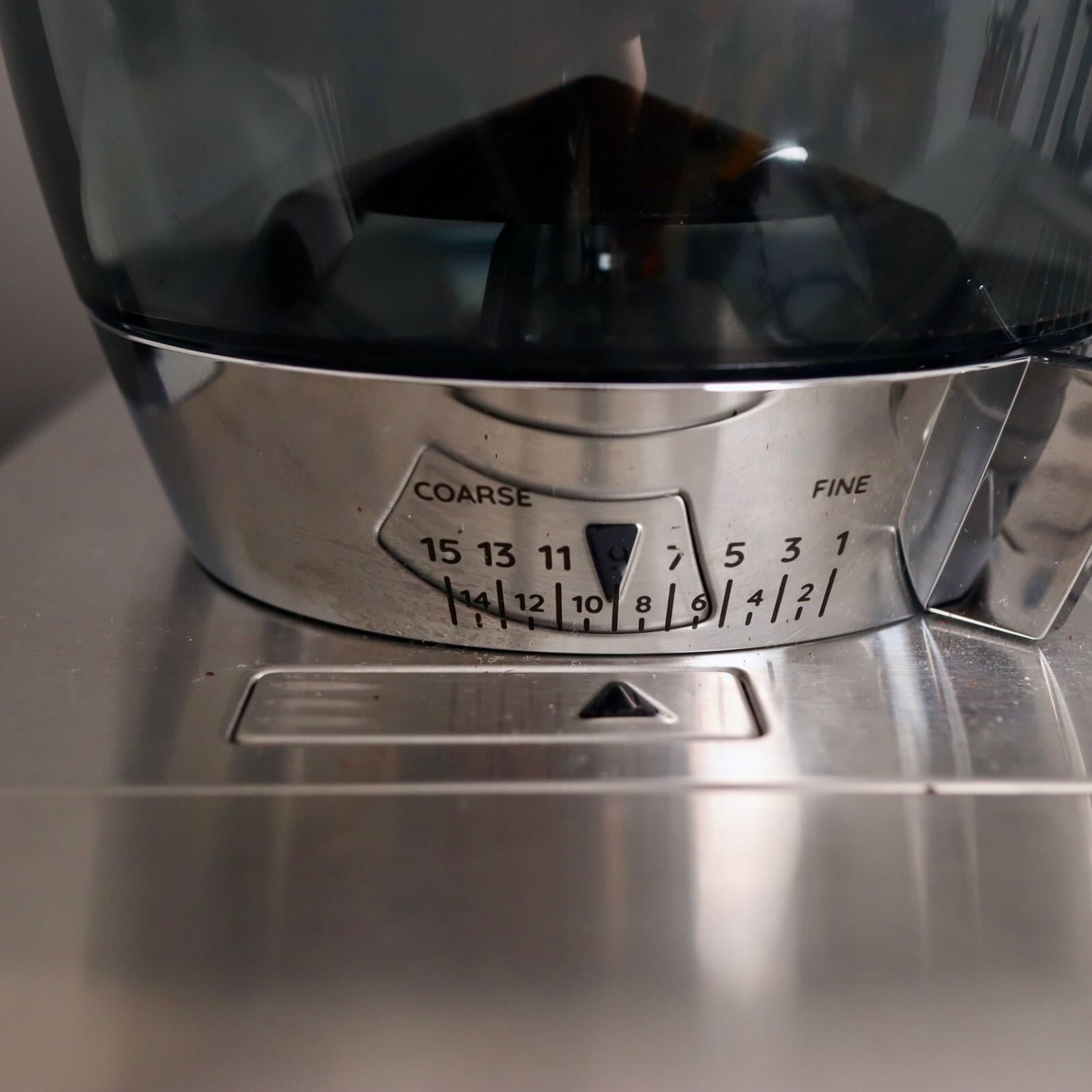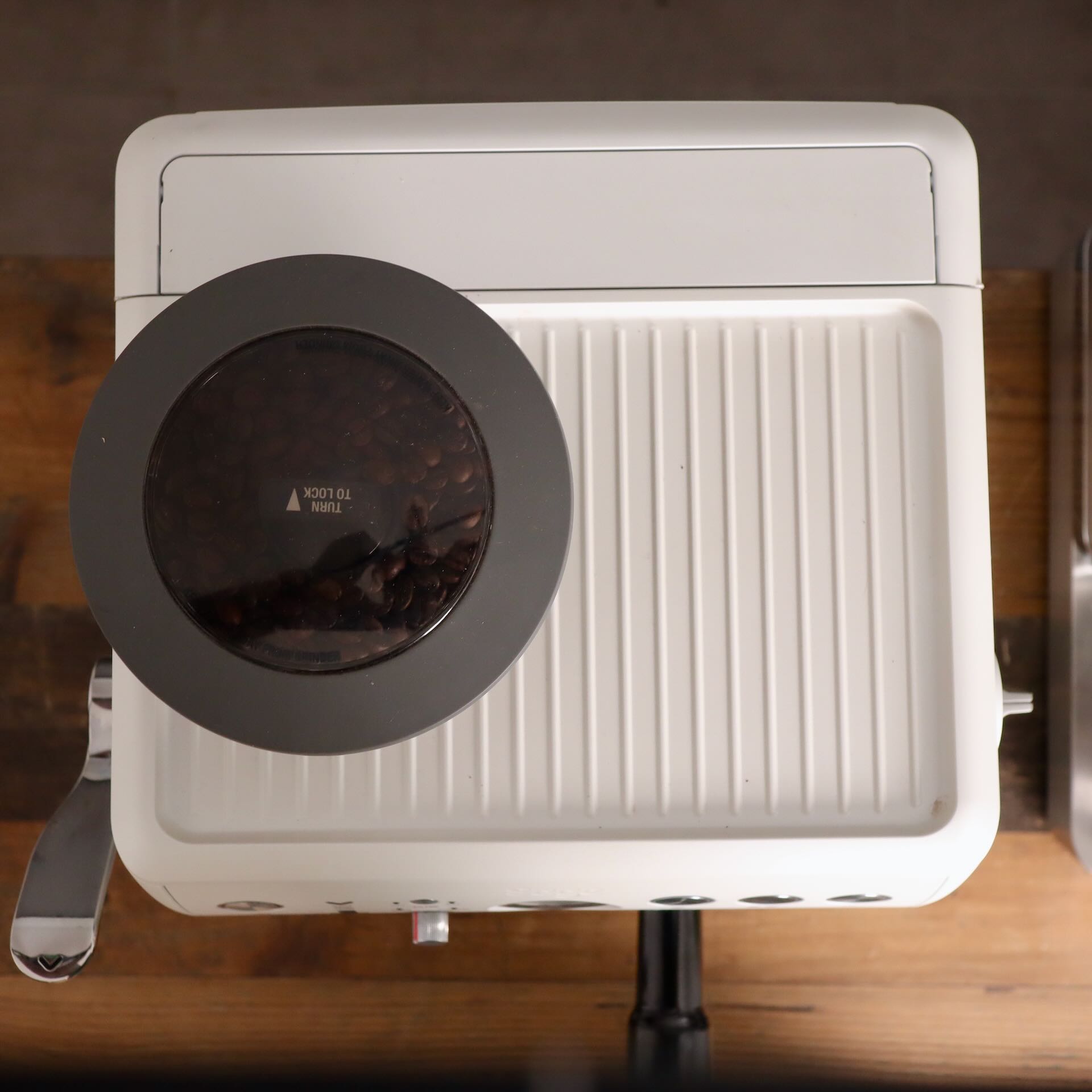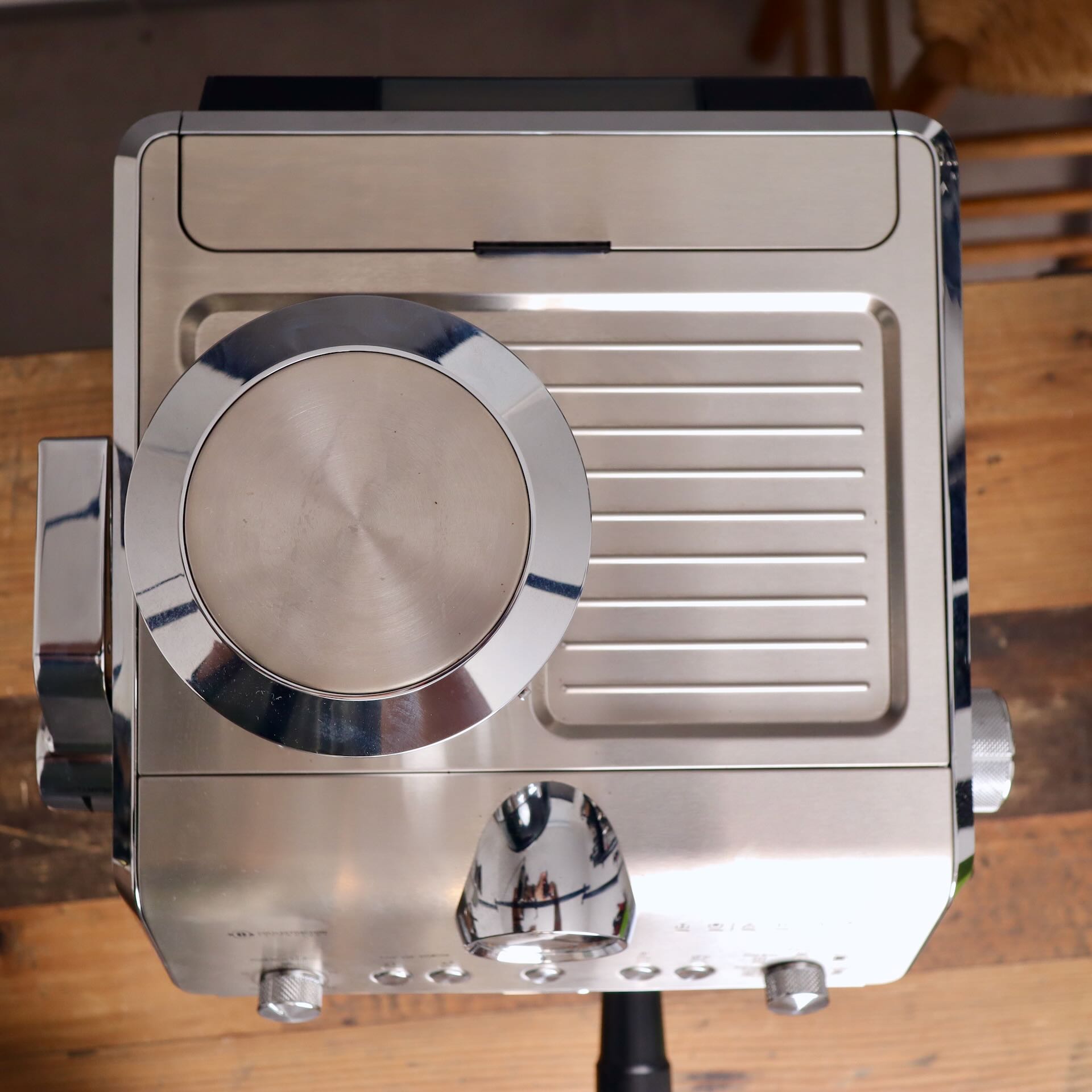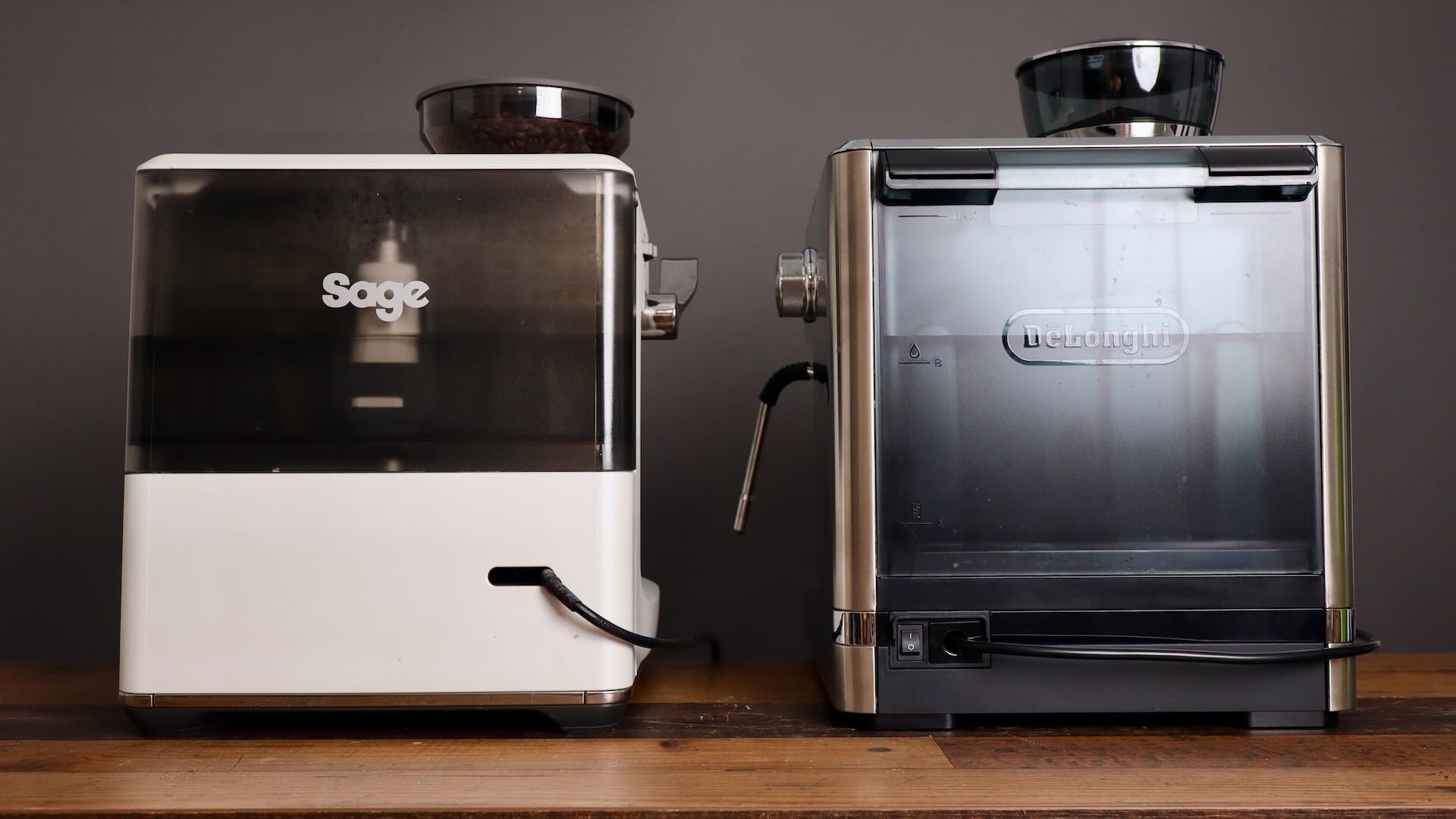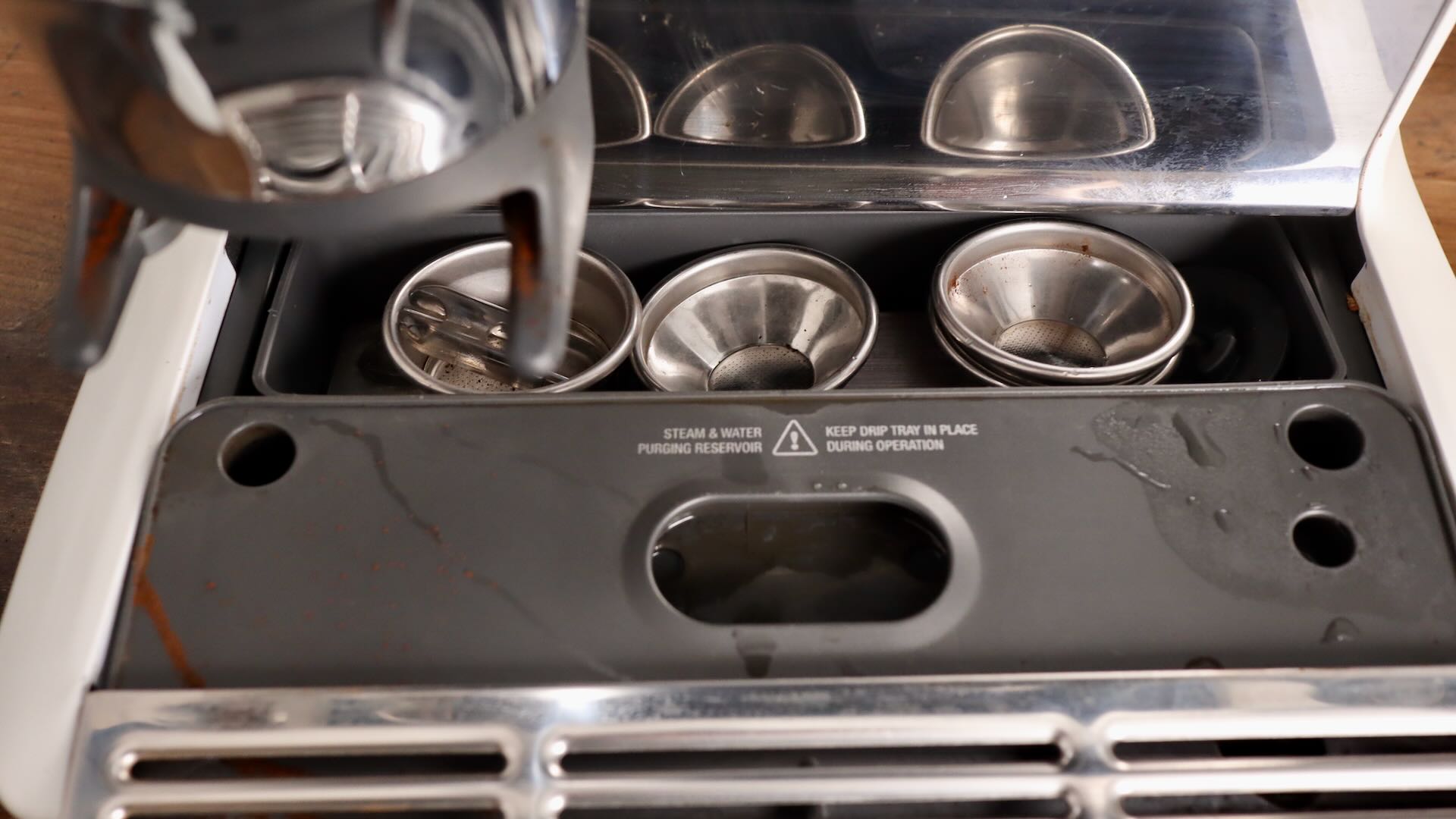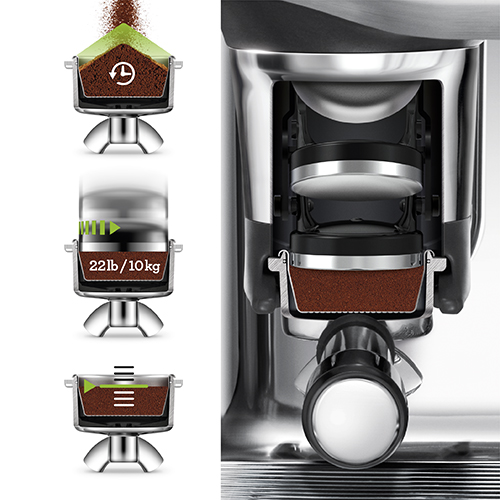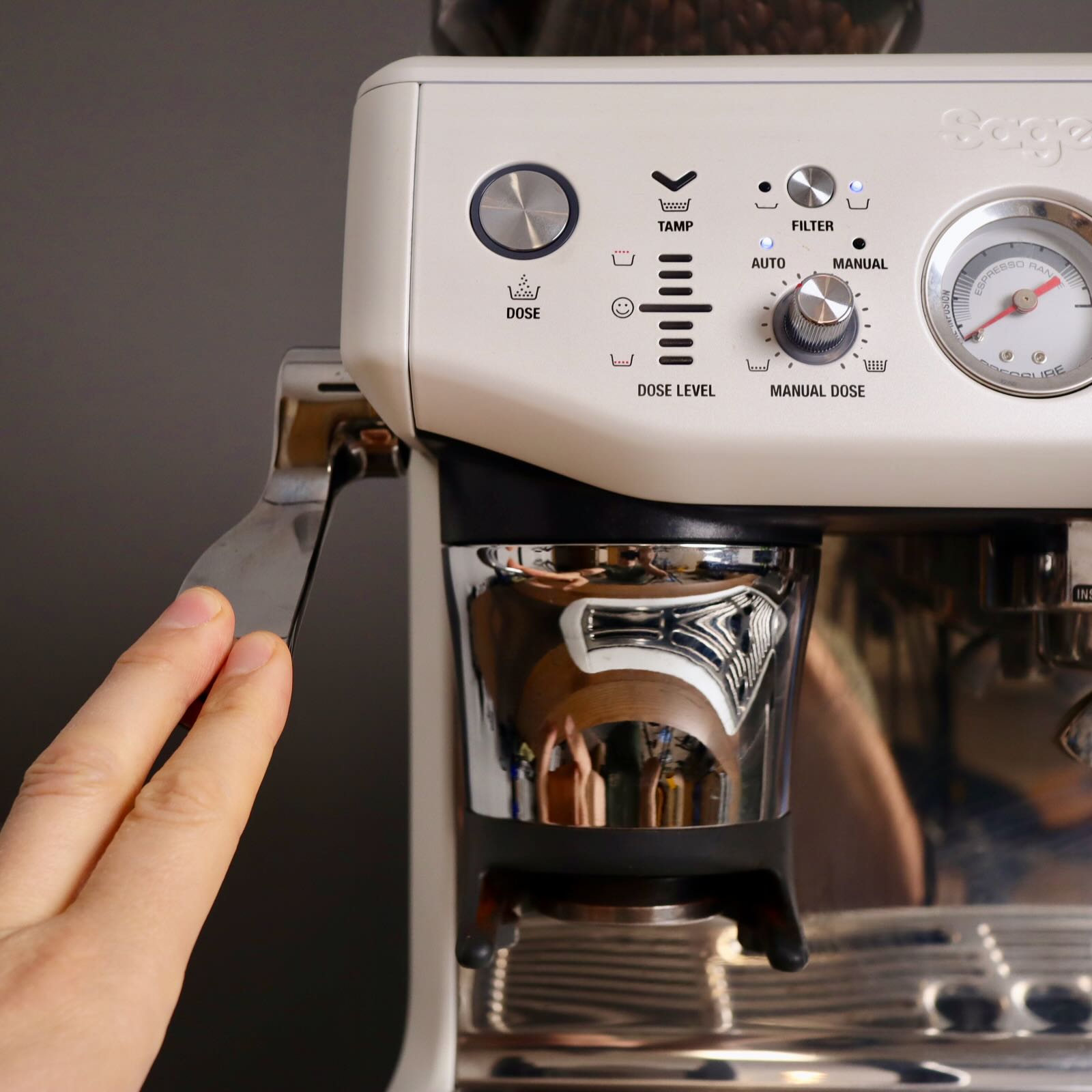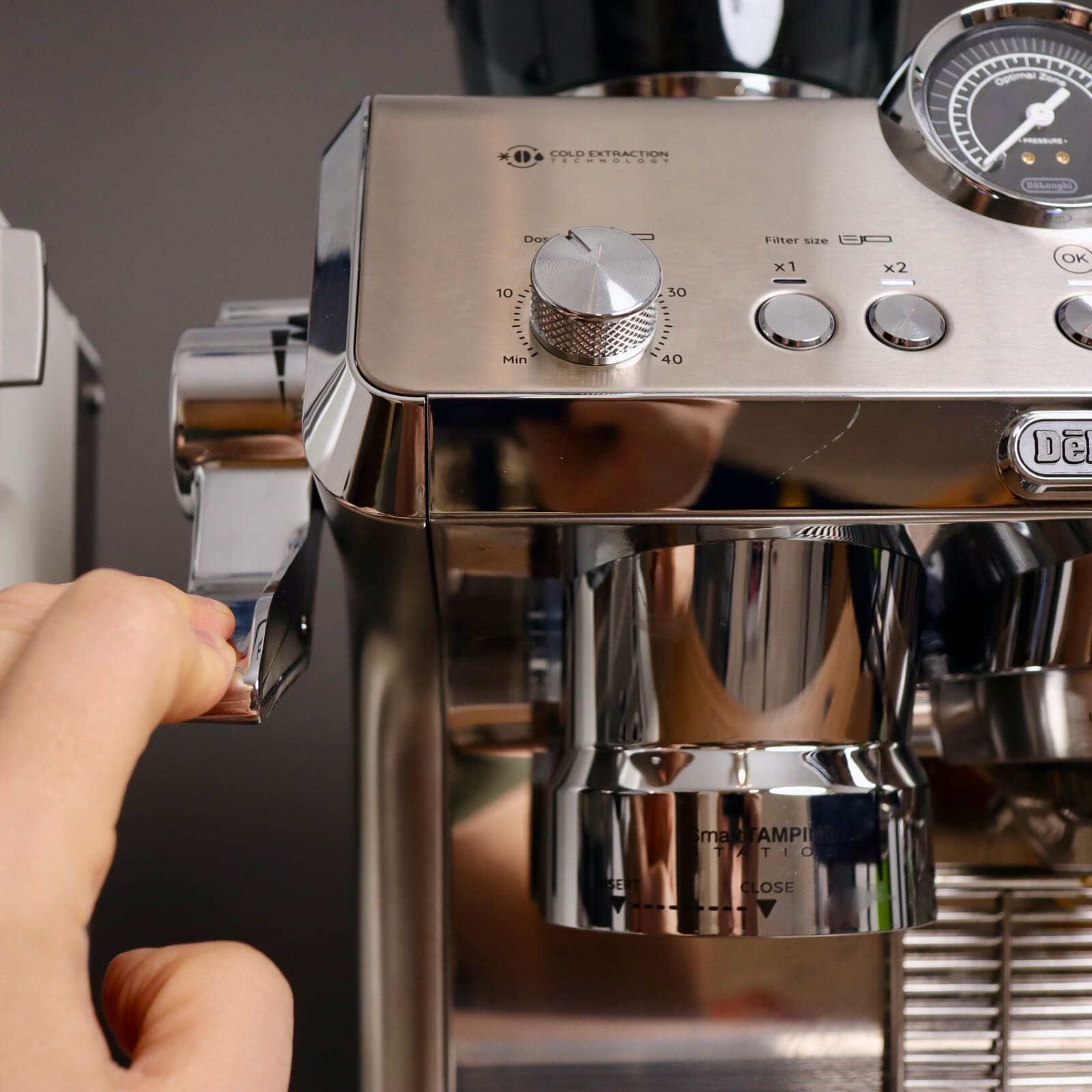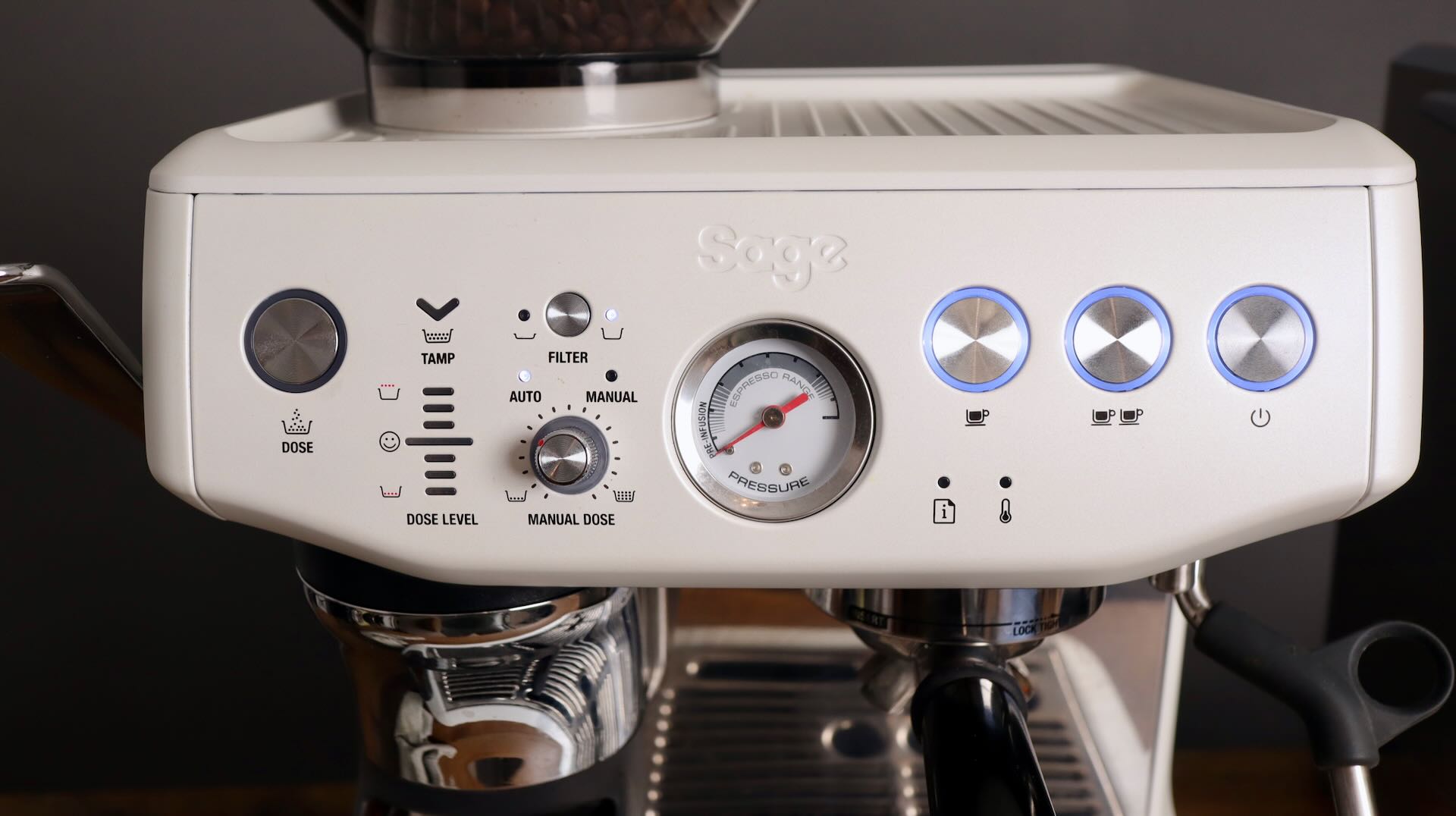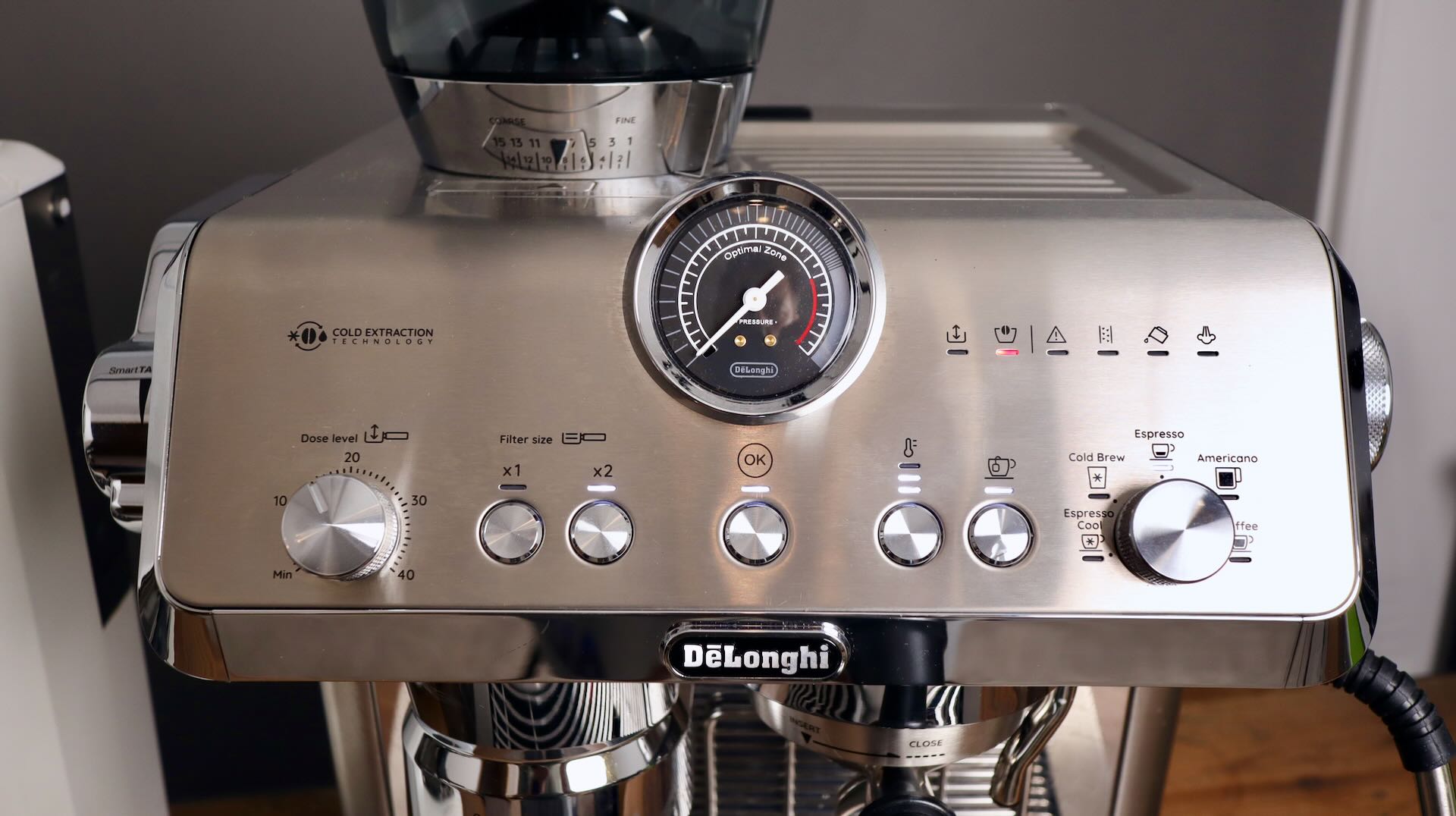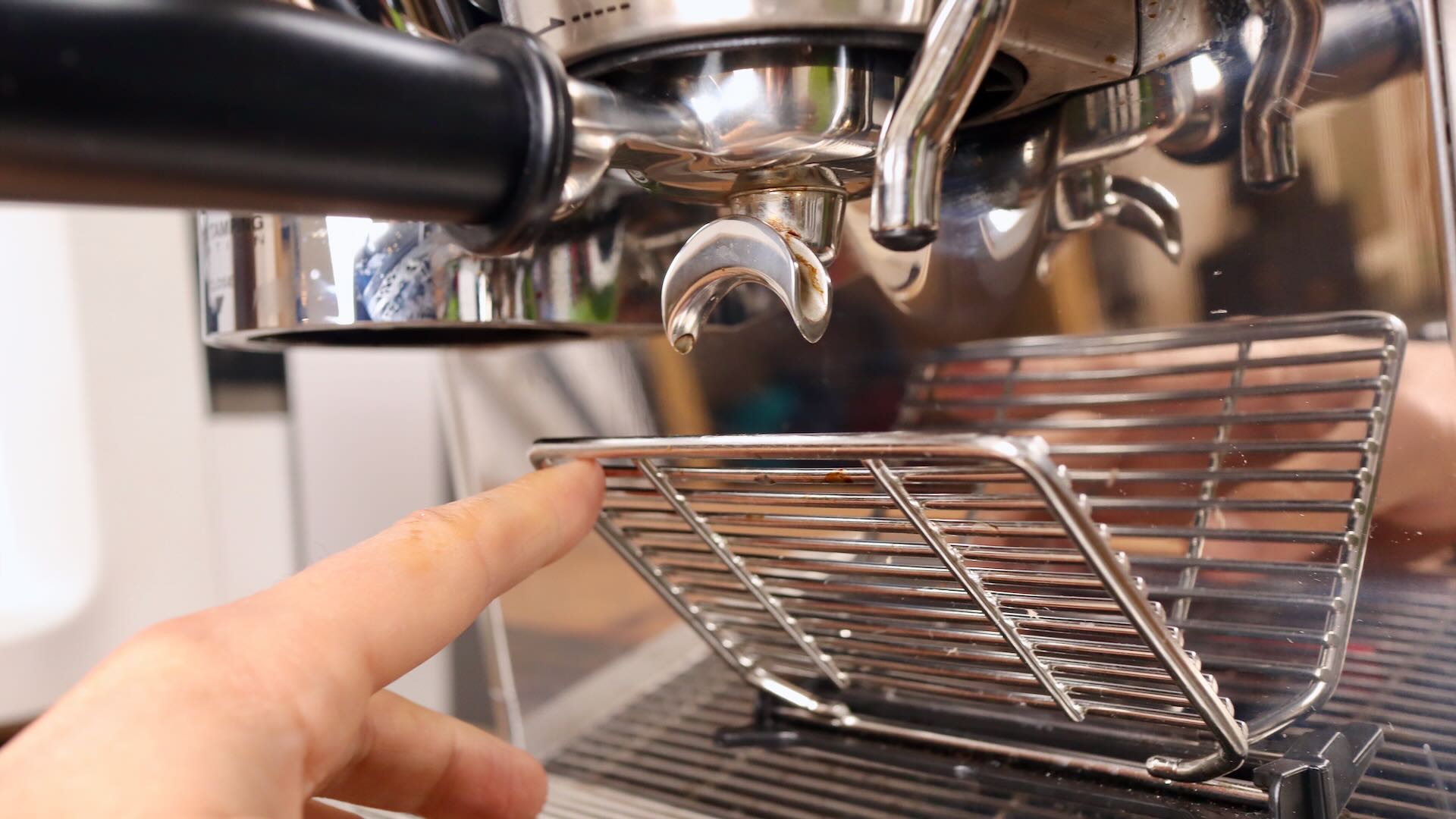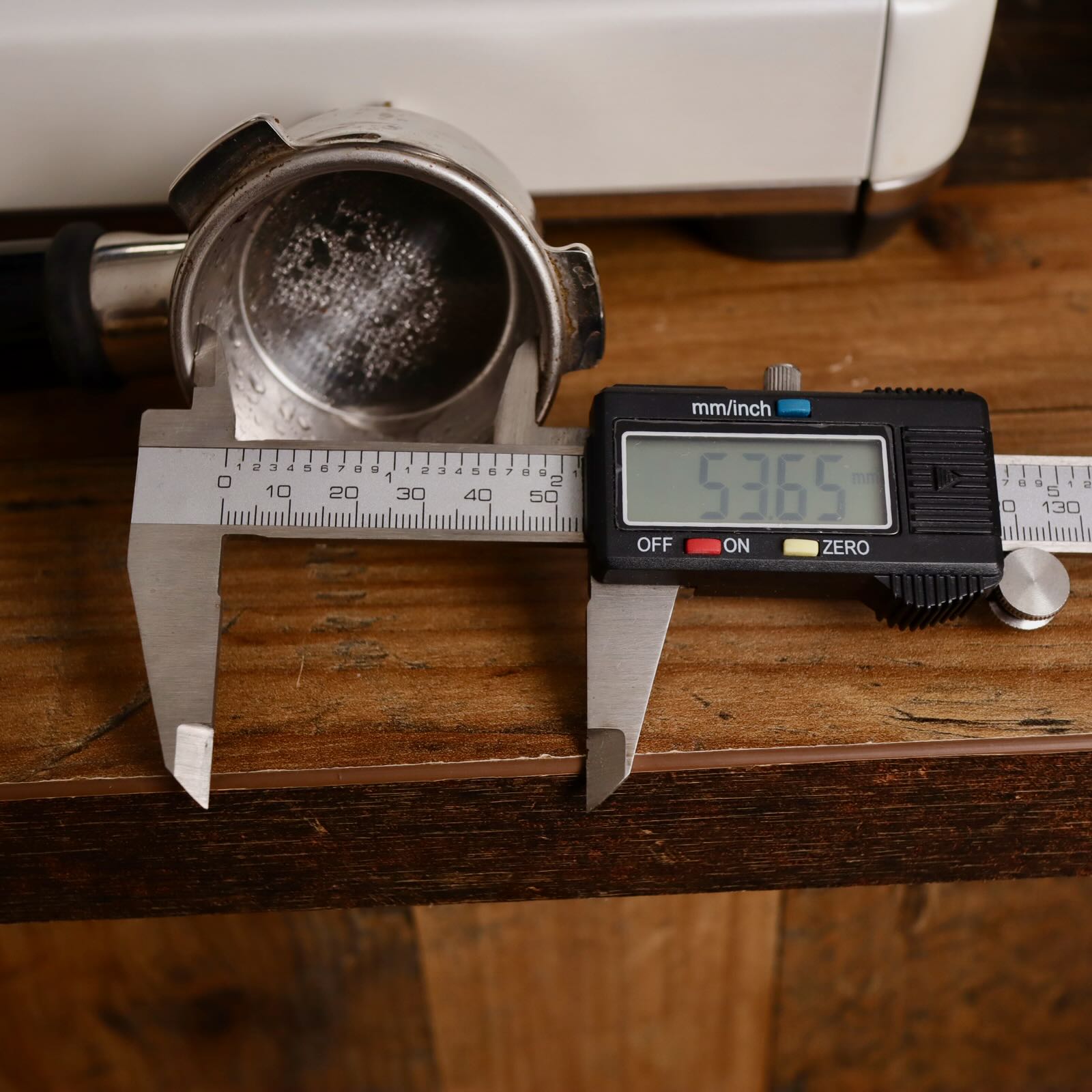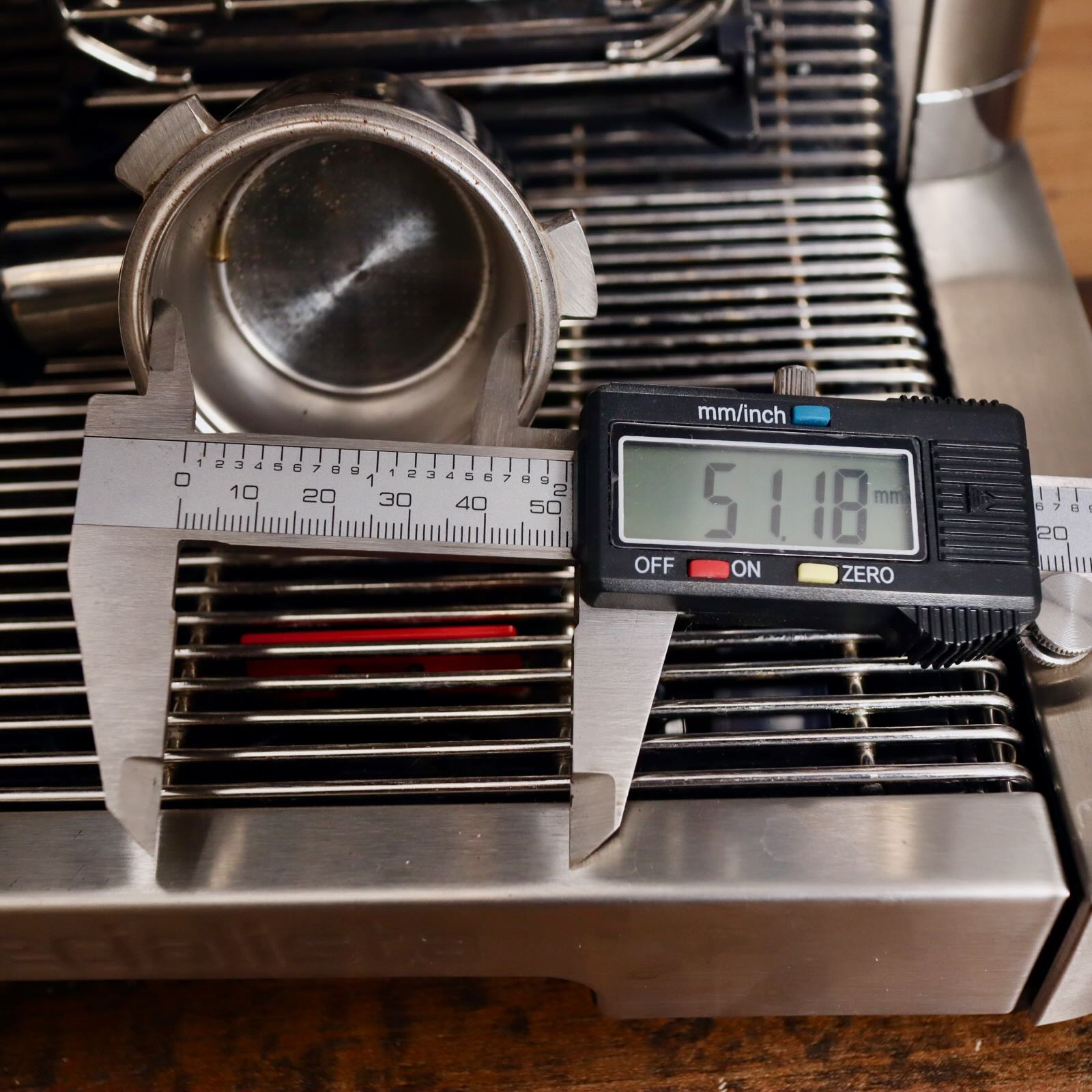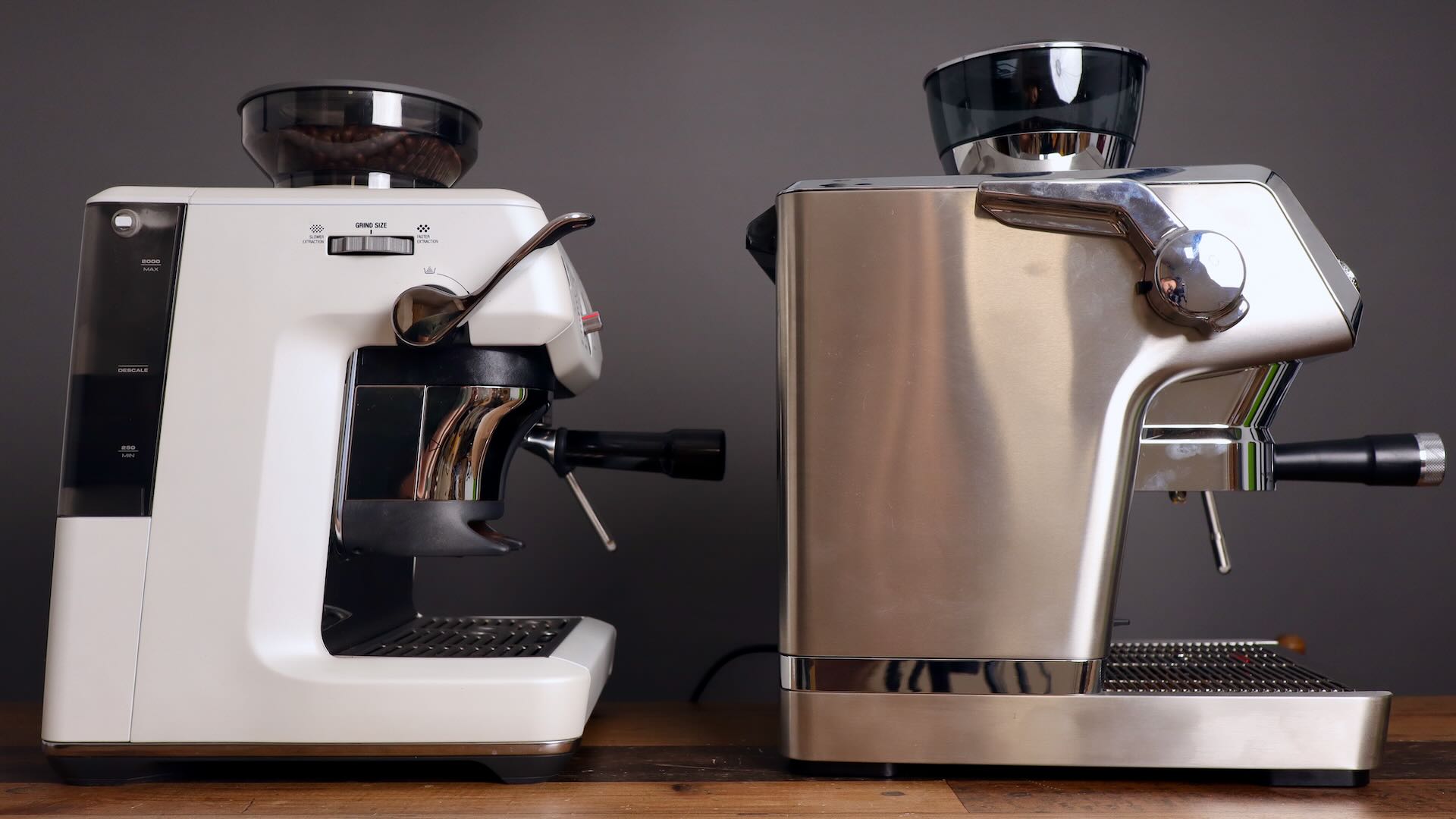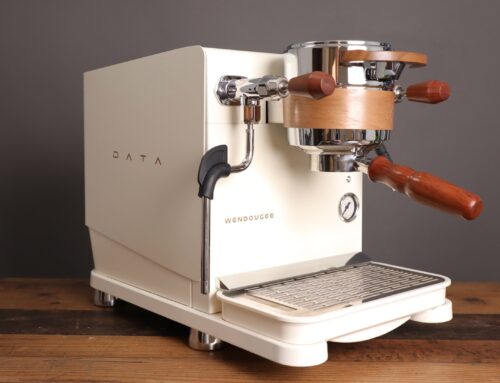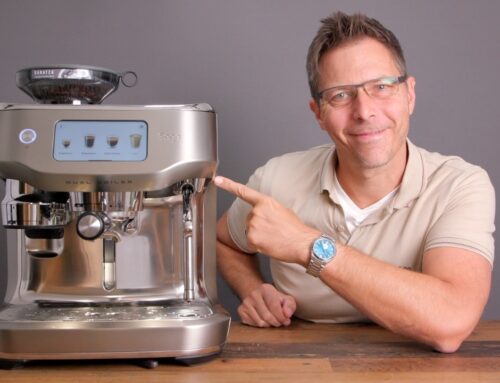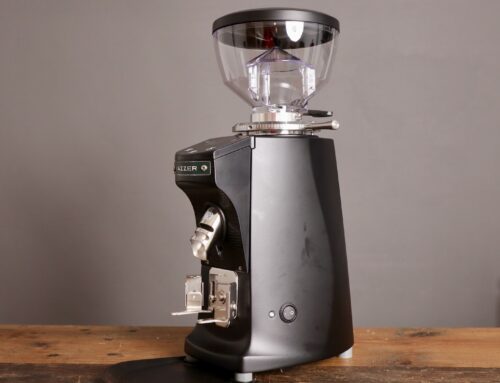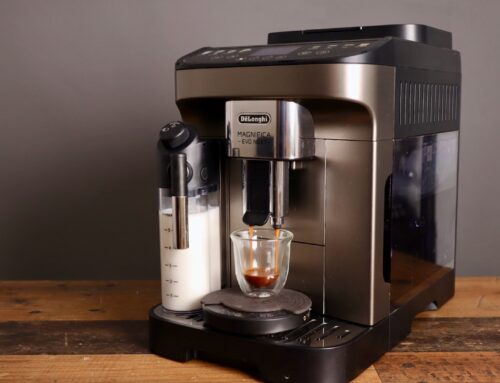Delonghi La Specialista Opera vs Breville Barista Express Impress
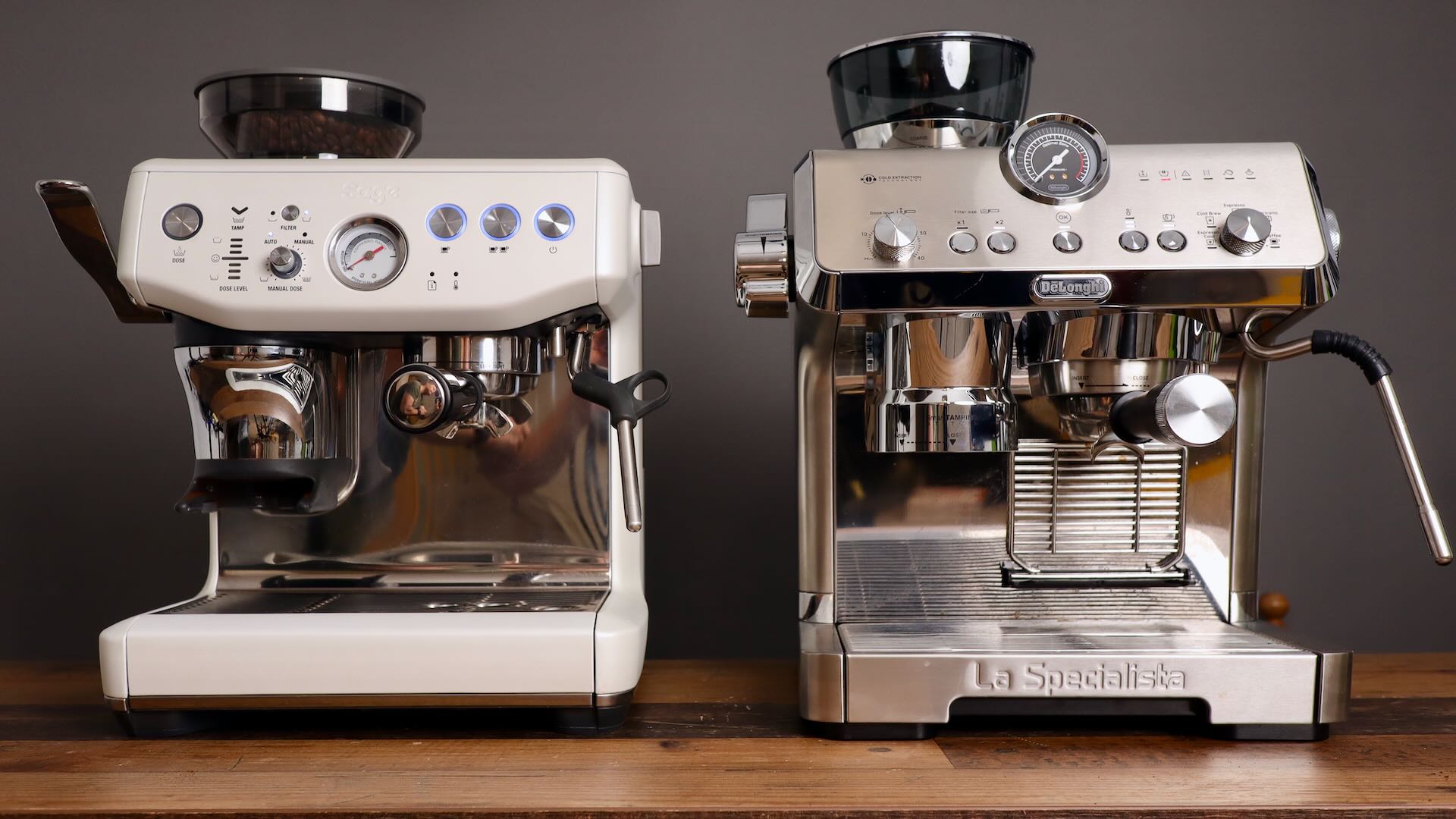
Breville vs Delonghi – an Ongoing Battle.
Breville (or Sage as it’s known in Europe) has long been the King of home semiautomatic espresso machines. Even today, being more than 10 years old, the Barista Express is the best selling semiautomatic worldwide. Its newer sibling, the Express Impress takes a step forward, and offers integrated tamping.
Delonghi released the La Specialista Arte EC9155 model a few years back, to compete with the Barista Express, but it failed in my opinion, as it had too few grind settings, and some manufacturing issues.
However, now Delonghi is back with a much improved model in the La Specialista Opera EC9555. It’s got enough grind settings now, plus a few new nice to have features that the Breville line omits. Maybe most important of all is the drink selection.
Drink Selection
So this is where the Opera really shines. It offers besides a normal espresso, an option for an Americano, plus a coffee crema. Maybe most important of all to new users however, is the addition of cold drinks! The Opera can do a ‘Cool Espresso’ and a ‘Cold Brew’ coffee. These are drinks omitted on the Barista Express line from Breville.
The Breville just has two options, to either start a volumetric extraction for a 1 cup or 2 cup espresso. So, it’s pretty basic in that regard, although it works well. What the Barista Express line does however incorporate is adjustable pre-infusion. The setting of pre-infusion is something left out entirely by Delonghi.
Pre-Infusion
On the Breville, if you press and hold the 1 cup or 2 cup button, you enter ‘Manual Mode’, and you can therefore pre-infuse up to 60 seconds, at a lower pump pressure. Once you let go, then the extraction starts with full pressure. This is really a nice feature to experiment with, especially when you have new beans and don’t know how long the extraction will take.
The Delonghi on the other hand has no options to change the pre-infusion, although it does in fact pre-infuse for 7 seconds, pauses for 1 second, then extracts at full pressure. But that does not seem to negatively affect the drink quality for Delonghi, as I have gotten some excellent drinks out of it. Let’s talk about that next.
Drink Quality
I feel that both of these machines can deliver very good drink quality, if you consider a few factors. First of all, you need pretty freshly roasted beans, like 2 weeks to 2 months off of roast date. Secondly, the machines should be fully warmed up, including their portafilters. I’d suggest running 1-2 shots through the machines without coffee grounds, to get the water circuits, brew groups, and portafilters warmed up.
In regards to espresso, both machines can provide a nice syrupy, chocolately drink for med-dark roasts, provided the grind and dose are dialed in pretty well. Aim for twice the yield – meaning if you put 16 grams of coffee ground in the basket, aim for 32 grams out in 25-30 seconds.
Besides being able to make good traditional espresso, these can also do better than their predecessors for lighter roasts, since you can increase the temperature. The Opera can be set to 96 degrees C, while the Barista Express Impress can be set for 95 degrees C. This results in being able to extract hot enough to end up with drinkable shots with lighter roasts, that aren’t too sour. Even so, I don’t think that either of these machines are really designed for lighter roasts. Their grinders are the bottlenecks here.
Grinders
Both the La Specialista Opera and Barista Express Impress use very similar grinders – they’re conical, stainless steel, small, and driven by smallish motors. The Express Impress comes with 25 clicked settings, while the La Specialista Opera has 15 clicked settings. So, the former beats the latter, with a larger adjustable range. That being said, I’ve always been between 8-10 on the Opera, and that has sufficed for me.
The Breville however has another advantage: the bean hopper. It’s better on the Breville because it’s removable. The bean hopper on the Opera is stationary, and cannot be removed for cleaning, or gaining access to the burrs. This will be a no go in some people’s books.
However, the Opera has a really cool trick up its sleeve – it has a bean hopper sensor. Gone are the times of an empty spinning burr set, waiting for beans because they’ve run out. The machine gives an indication that the beans need to be refilled, with an illuminated signal light. That’s cool! This works with two photoeye sensors, built into the hopper. Talking about sensors, the Delonghi gets points for that in the next section…
Water Tank
Both the Delonghi and the Breville have large 2 liter water tanks, but the Delonghi has a decided advantage: it includes a float sensor for water level. Therefore, you never start a drink with too little water. You don’t know how many times I’ve run out of water on the Barista Express Impress, in the middle of pulling a shot! So then you can throw that aborted shot away.
I also find that the Delonghi uses in total less water. Both machines use some water to cool down their thermoblocks after steaming milk. The Breville is however a hungry girl, and really goes through a lot more water in cooling down than does the Delonghi. Point for Delonghi here.
That leads us to the drip trays, and emptying them, which is certainly better on the Breville.
Drip Trays and Build Quality
I really like the drip tray better on the Breville. While both are solidly made, the Breville is easier to wipe off, easier to dump into the sink, and also has a larger capacity. I’ve often spilled the water in the Opera’s drip try while moving to the sink, as it’s dimensioned too small, and gives an indication too late, to dump it.
As for build quality, I think they’re quite similar. They’re both made with a metal casing, which is grounded on both models. The metal on the Breville is magnetic, while it’s not on the Delonghi Opera. That’s either good or bad, depending on your view point. I like magnetic casings, to stick things on with magnets.
I’d say the build is maybe just slightly more refined on the Breville, but not by much. Delonghi has really caught up here, gifting the Opera with a fully stainless steel design, even on the fascia. Where the Breville still definately wins though, is the integrated tamper.
Integrated Tampers
I gotta just say it – Breville developed an awesome tamper from the get go. It looks slick, it has a removable cover, it does an 8 degree puck polish twist automatically, and its smooth base keeps the grounds where they belong – in the basket. It’s also super robust.
I was originally skeptical about the integrated tamper in the La Specialista line – they look cheaply done. In fact the lever does feel pretty cheap, especially compared to the Breville’s, but it works well. The Delonghi does a fine job tamping, even if the haptic feeling isn’t as good. But, it does not do an automated puck polish. For that, you have to leave the tamping lever down, and remove the portafilter from the cradle. That motion will force a puck polish.
Maybe the biggest problem I have with the Delonghi tamper is that it does not feel super robust on the machine body. You can see the left side of the machine bow down a bit while tamping – that doesn’t give the best impression.
Steam Wands
I would say that both steam wands are more than adequate, as they can both steam beautiful silky milk for cappuccinos and latte art. They are however, both a little on the slow side, taking 10-20 seconds to warm up to steaming temperature, and requiring about 60 seconds to warm up around 200ml or 8 ounces of milk to 60 degrees C or 140 F.
Where I do much prefer the steam wand of the Delonghi however is in the clean up. Since the Opera employs a ‘non-burn’ steam wand, the outside of the wand doesn’t get too hot, and milk is really easy to wipe off after steaming. The Barista Express on the other hand does not have this feature. It gets really hot, and milk gets caked on easily. It’s hard to get off, and looks kind of gross.
Design and HMI
I like how both of these look, honestly. If I had to choose one just based on aesthetics though, it would be the Breville Express Impress. It just looks cooler, with its angled fascia and rounded corners. The integrated tamper also looks cooler than the one on the opera. Not that the Opera doesn’t look cool, because it does. This will come down to personal preference.
What I do like about both machines are their haptic features. They both have analog manometers, so you know the pressure range in the extraction. They also both have dials to turn for making selections, or buttons to press for carrying out commands (extract double espresso). I myself prefer this haptic experience over touchscreens.
Quicky Design Inclusions
Something I’ve always appreciated about Breville are the unexpected niceties. For example, when you pull out the drip tray, a little storage bin comes out with it, where you can store your baskets, backflushing disk, and more. It’s a nice little feature, for sure.
The Delonghi does not come with such handy little storage, but does come with a nice to have feature itself: a foldaway cup tray. Using a little espresso cup? Fold down the tray to use it. Making a larger coffee crema? Fold the cup tray up and out of the way – it attached magnetically to the back plate of the machine (this part is magnetic, contrary to the rest of the casing).
Quietness
One thing that really surprised me about the La Specialista Opera was just how quiet it is while extracting. While both of these machines use vibratory pumps, the Opera is a good amount quieter than the Barista Express Impress. I think this is either due to some casing dampening, or more likely due to pump control. Either way, it makes for a more premium experience, and should be less annoying to other members of the household.
Water Spouts
Now this may not interest many of you, but the water spout is better on the Delonghi. On the Barista Express Impress, it sputters a lot, and creates a mess on your countertop. This is exacerbated if you’re wanting to put hot water on top of an espresso extraction for an Americano, as it will sputter espresso out of the cup.
The Opera’s water spout does not sputter, and it’s also placed much better – right next to the brew group. This means that you can put your cup under the portafilter spouts and water spout, press Americano, and walk away. It will make the Americano for you, without you having to wait there and move the cup. Very nice. You can use that extra time to make toast or get some other breakfast ready.
Sizing and Dimensions – 51mm vs 54mm
Something I often forget to mention is the sizing. Much depends on the portafilter and basket size, which in the case of the Delonghi is 51mm. Delonghi never sways from their 51mm basket sizing. Breville in this case uses 54mm. Both of these sizes are very common, and you can therefore find a lot of after market parts for both.
I actually like these smaller diameter portafilters better than the larger 58mm variant. For me, the taste is just as good or better with the deeper pucks these smaller diamter portafilters make, and also a little more forgiving. On top of that, they’re more ergonomic – the puck knock outs are much easier on smaller deeper pucks, compared to larger more shallow pucks. Believe me, that makes a difference in workflow.
Verdict – Which is better: Breville or Delonghi?
In this case, for me it’s a bit of a toss up. I honestly like the performance a bit better on the Delonghi, and I really appreciate the included water and bean sensor. But, the tamper is not as good as the Breville, and it’s a big disadvantage that the bean hopper is not removable. My wife also prefers the looks of the Barista Express Impress. If it were just up to me, I’d probably take the Delonghi. My wife would take the Breville.
But of course a big deciding factor are the cold drinks. Anyone looking to get cold drinks will NEED to choose the Opera, if they are considering exactly these two machines.
Honestly, they’re both very good, and offer a lot of bang for the buck, in my opinion, compared to other options out there.
Check pricing and online reviews below:
Specifications
Breville Barista Express Impress:
- 317 mm x 368 mm x 419 mm OR 12.5″D x 14.5″W x 16.5″H
- 10.75 kg or 23.7 pounds
- 1550 Watt thermoblock
- 25 click stainless steel grinder, time based
- 2 liter OR 68 ounce water tank
- 20 second start up time
- 3 way solenoid valve
- Made in China
Delonghi La Specialista Opera
- 380 mm x 370 mm x 445 mm OR 15 x 14.5 x 17.5 inches (width x depth x height)
- 13.2 kg or 29 pounds
- 1550 Watt thermoblock
- 15 click stainless steel grinder, time based
- 2 liter OR 68 ounce water tank
- 20 second start up time
- 3 way solenoid valve
- Made in China
How to Save a little..
While the Touch Impress is quite an expensive machine, if you live in the UK or EU, I can provide you with a 15% off coupon if you like. Just enter your info in the form below.
Videos:
You are currently viewing a placeholder content from YouTube. To access the actual content, click the button below. Please note that doing so will share data with third-party providers.
More InformationYou are currently viewing a placeholder content from YouTube. To access the actual content, click the button below. Please note that doing so will share data with third-party providers.
More Information